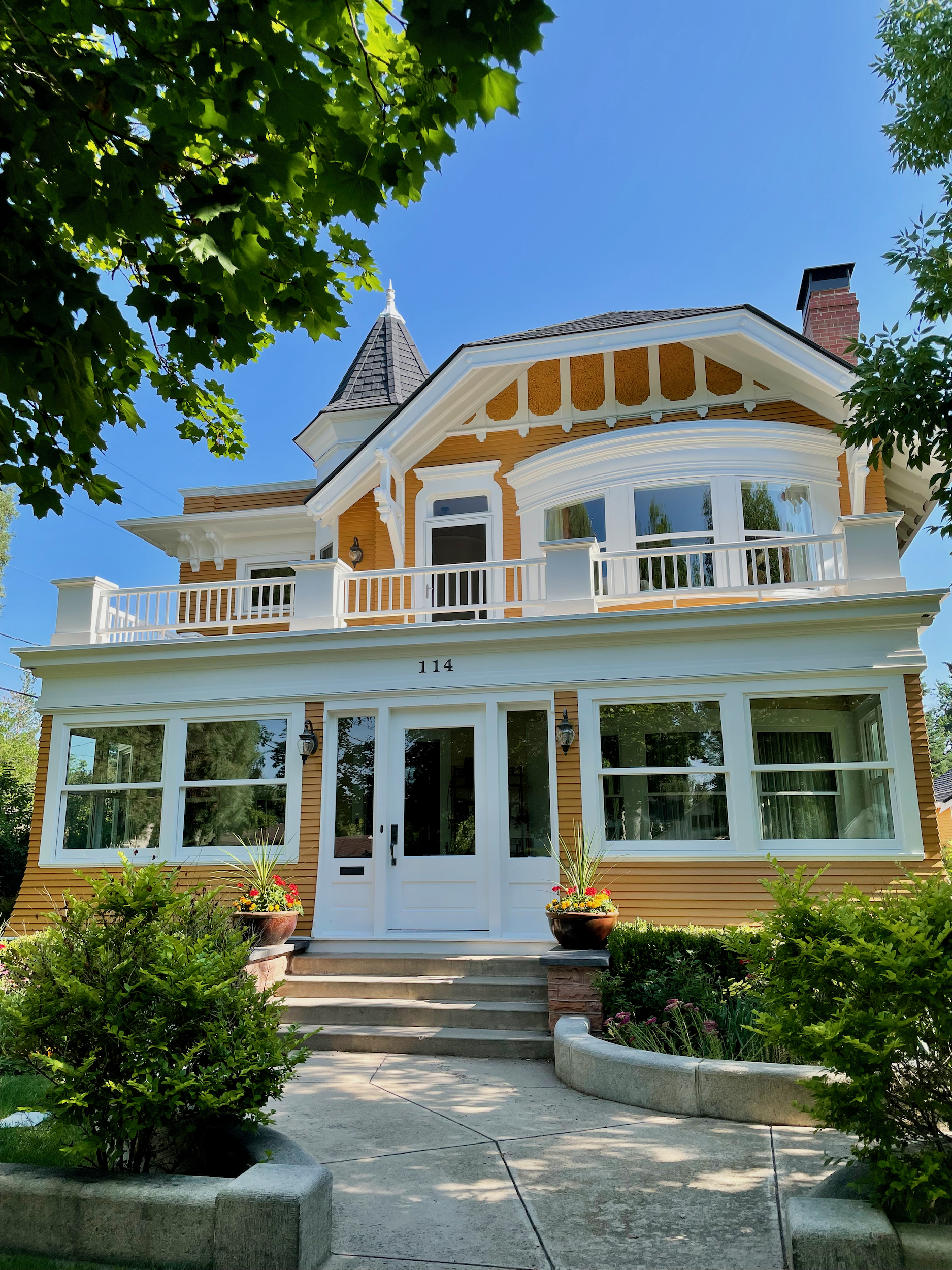Colorado Springs Historic Architecture Tour
The American Institute of Building Design (AIBD) Summer Conference was hosted in Colorado Springs this year, and this summer’s theme was “Defining Your Architectural Style.” The AIBD always puts together a great conference and often includes local tours as well, and this year Larry Gilland was delighted to help put together a tour of some of the historic architecture of his hometown!
Larry has a passion for both travel and studying architecture in person, and he’s always enjoyed walking the neighborhoods of Colorado Springs’ historic Old North End to take in the wide variety of architectural styles found there. It’s a wonderful way to study historic proportions and principles and find ways to adapt and apply them to the home designs we create today. In putting together this tour to show off our city’s residential beauty, Larry worked together with longtime friend and colleague Bernie Kern—AIBD President and founder of the Central Colorado Chapter—and our fantastic local historian and tour guide Tim Scanlon, along with the entire LGA Studios team.
The walking tour consisted primarily of several blocks in the Old North End (north of Uintah Street), including Wood Avenue, Cascade Avenue, Alamo Avenue, Culebra Place, and Del Norte Street, and it also continued across Uintah Street to the Colorado College campus. You can find out more about the history of the Old North End at their website: https://oldnorthend.org
To give you a taste of some of the history and styles covered on the route, check out the introduction from the tour book we put together:
***
Hone your eye for architectural forms and get to know the history of Colorado Springs—through its houses!
This walking tour provides a unique opportunity to see a number of architectural styles and elements while enjoying the very sunshine, fresh air, and mountain views that led early residents to settle in Colorado Springs in the first place.
You’re here at a very special time in our city’s history—July 31, 2021 marks the 150th anniversary of when the first stake was driven to mark the new town of Colorado Springs in 1871. Thank you for joining us to celebrate our Sesquicentennial!
Colorado Springs was founded for a very unique reason for its time. Not only was the location landlocked, but it also wasn’t along any convenient railroad lines, rivers, profitable mines, or strategic resources. Instead, Colorado Springs was founded simply because the location was so breathtaking, with Pikes Peak rising from the Front Range and the Garden of the Gods creating a striking scene of nature’s beauty.
When the nearby Cripple Creek Gold Rush took off in the 1890s, the new town with the stunning location was ripe for freshly minted millionaires looking to build their homes.
The area we’ll be touring today was known in the late 1800s as “Millionaire’s Row” and was founded for its natural beauty and resort destination potential.
When Colorado Springs founder William Jackson Palmer first rode through the Colorado Territory in 1869 as a railroad surveyor, he fell in love with the stunning mountain views of Pikes Peak and the beauty of the Garden of the Gods.
Palmer resolved to build a visionary city of culture and elegance that would be “the most attractive place for homes in the West.” Fortunes made at nearby gold mines gave early residents the means to build large homes and the desire to impress their neighbors by importing architects and popular architectural styles.
This consolidated area of well-preserved homes is now known as the Old North End. These blocks, in combination with Colorado College—founded in 1874—create not only a unique tour experience to understand the city’s architectural heritage, but also serve as a catalyst to discuss various styles, proportions, and character materials whose principals can be translated to today’s home designs.
Over the course of just a few blocks, we’ll be exploring a wide variety of architectural styles, allowing us to analyze proportions, patterns, and forms for a deeper understanding of how these elements can apply to your own practice.
Styles we’ll identify include Neoclassical, Shingle, Colonial Revival, Italian Renaissance Revival, Tudor, Spanish Revival, Gothic, Craftsman, Mid-Century Modern, International, and Art Deco, among others.
We’ll also discuss nationally known architects who have designs along this route, including Douglas & Hetherington, Thomas MacLaren, Jan Ruhtenberg, John Gaw Meem, and Elizabeth Wright Ingraham.
We’ll be using hallmarks and definitions from Virginia & Lee McAlester’s excellent A Field Guide to American Houses to identify styles along this route, and we hope you have fun analyzing and critiquing the local architecture as well!
***
If this type of local architectural history piques your interest, you’re in luck. Larry’s working on a Colorado Springs Architectural Pattern Book with a focus on the architectural styles and history of our city. You can sign up to know when it releases here.
















